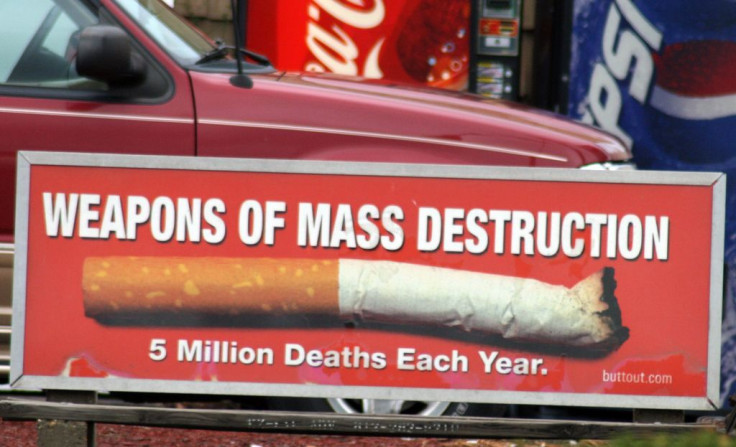Smoking Bans Or Higher Tobacco Taxes: Which Preventative Smoking Strategy Has The Advantage?

Tobacco control initiatives, like smoking bans and increasing the taxes on tobacco, are steadily popping up in cities all over the United States with support rising from both policymakers and residents. But does combining these initiatives diminish their impact? A recent study conducted by researchers from The Ohio State University and Purdue has found that some anti-smoking proposals just don’t work well together.
"Both taxes and bans have their place. But bans might stop casual smokers from becoming heavy tobacco users," said Mike Vuolo, lead author of the study and assistant professor of sociology at The Ohio State University, in a statement. "If you think of casual smoking as the beginning of the path to addiction, then bans might be the way to go."
Vuolo and his colleagues gathered data using the National Longitude Survey of Youth 1997, which included interviews with 4,341 people from 487 cities between 2004 and 2011. Participants were between the ages of 19 and 31 and were interviewed by Ohio State's Center for Human Resource Research for the U.S. Bureau of Labor Statistics. This data was compared to the Americans for Nonsmokers' Rights Foundation (ANRF) tobacco policy database on city-level smoking bans and tax rates.
People living in a city with a sizeable smoking ban increased from 14.9 percent in 2004 to 58.7 percent in 2011, while the average tax on tobacco increased from $0.81 to $1.65 per pack in the same timeframe. Clearly, cities with the highest rates of smoking were the cities that had no smoking bans and no or low tobacco taxes. Residents of cities with bans were 21 percent less likely to smoke compared to cities without them. Taxes, on the other hand, seemingly had no effect on the number of so-called “casual smokers” living in a city.
"We're not just looking at how state policies affect smoking rates in general. We were able to determine how individual smokers reacted to changes in government policies at the city level," Vuolo said. "We were never able to get to that level of detail before."
Heavy tobacco taxes did seem to have varying effects on casual smokers compared to those who smoked more than a pack a day. Although combining smoking bans with high taxes didn’t seem to reduce overall smoking rates compared to either policy by itself, smokers with a pack-a-day habit were more likely to be deterred from smoking with higher taxes rather than actual bans. The Center for Global Health Research of St. Michael's Hospital published a review in Jan. 2014 that found tripling tobacco taxes could save around 200 million lives that would’ve been lost to smoking-related diseases.
"There's a lot of evidence that casual, social smokers are influenced by their environment. If they can't smoke inside with their friends at a restaurant or bar, they may choose not to smoke at all," Vuolo added. "They are both effective in different ways. Smoking bans might be more effective in preventing new smokers, but it definitely pays to do something. The worst case is not having bans or taxes."
A similar study conducted by the University of California actually tracked the smoking rates for San Rafael, Calif., after the town implemented what was called at the time “the most stringent smoking ban in the nation.” Results showed that banning smoking everywhere except the smoker’s house can significantly reduce smoking rates. Yet another study showing the success of smoking bans also provided a reasoning: smoke-free places prevent teens from getting cigarettes. Teens that were unable to bum a cigarette were also less likely to buy their own pack.
Source: American Journal of Public Health. 2015.



























